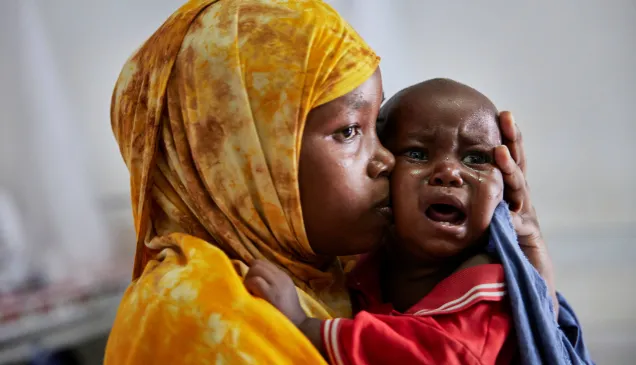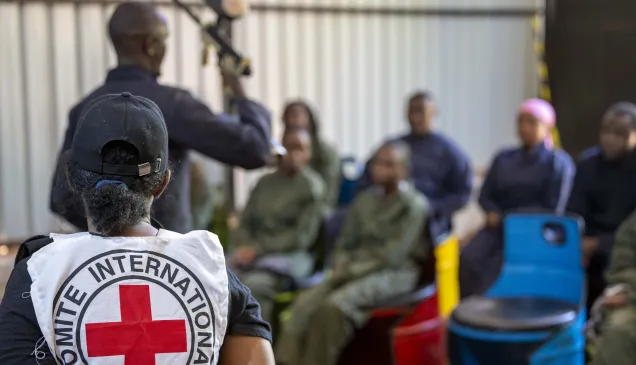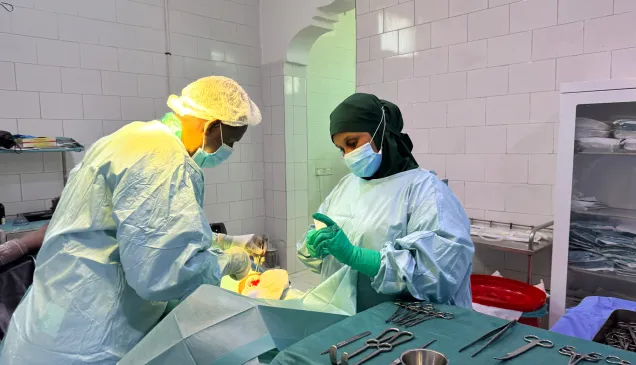Faadumo Ali watches over her two-year-old daughter as she sleeps at the intensive care unit (ICU) of the Kismayo General Hospital stabilization centre. They have been here for just over a week and her daughter is responding well to the treatment. When she came in, her whole body was swollen, a tell-tale symptom of a condition called oedema which is as result of fluid retention.
“I brought my daughter here and she was all swollen. I'm staying with her, and she is getting treatment. She is still a bit tired, but the swelling is not as bad as it was,” says Faadumo while seated with her daughter in the ICU wing of the stabilization centre.
Somalia: Life-saving assistance to people affected by the drought
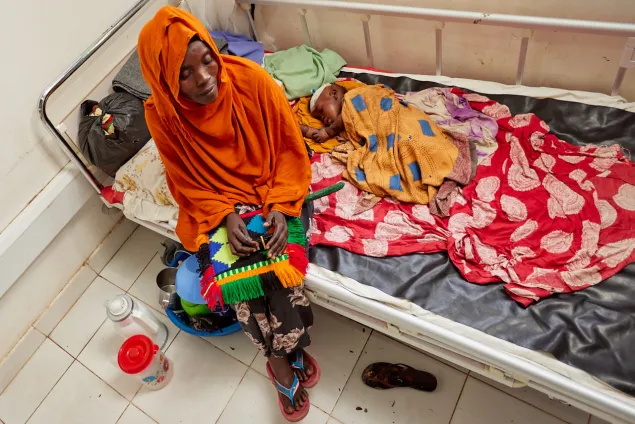
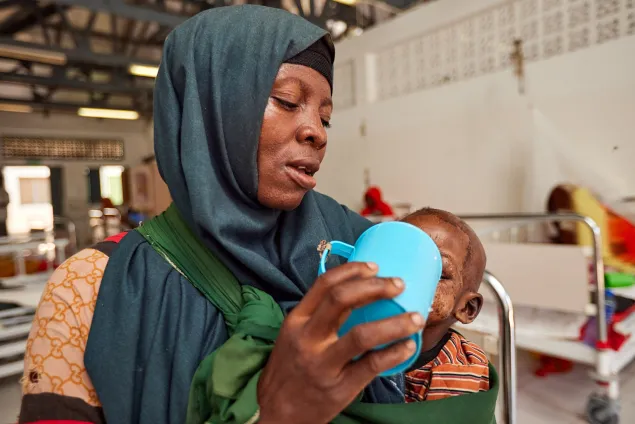
Arbay Ahmed Siyid’s son is barely two years old. He has been in the ICU phase of the treatment for the past three weeks. Through a careful administered dose of therapeutic milk, he has been regaining his health. Despite the good progress, Arbay Ahmed, worries of her other six children she left back home in Jamame.
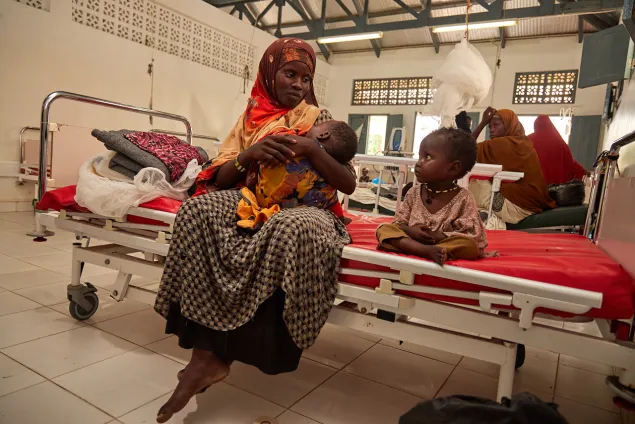
Maryan Ali Ahmed and her daughters took two days to reach the hospital. Ikraan Abdiaziz (right), almost two years old, was severely malnourished. Two weeks into the treatment program, Ikraan has regained her liveliness. In fact, she is leaving the ICU for the the next phase of the treatment where she will be under a lighter care regimen.
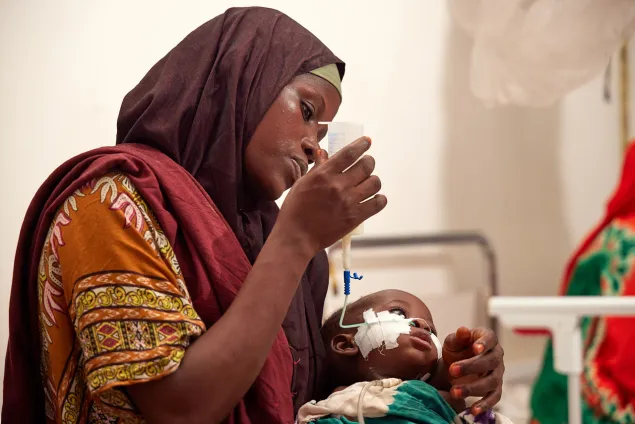
A lack of appetite is a common symptom for severely malnourished children. Since part the treatment involves a precise daily dose of formula milk laden with nutrients that the baby needs, feeding is done through a nasal tube until they regain the strength to take the milk orally. Saynab Yuusuf’s eight-month-old baby stopped breast-feeding and is now being fed through a nasogastric tube.
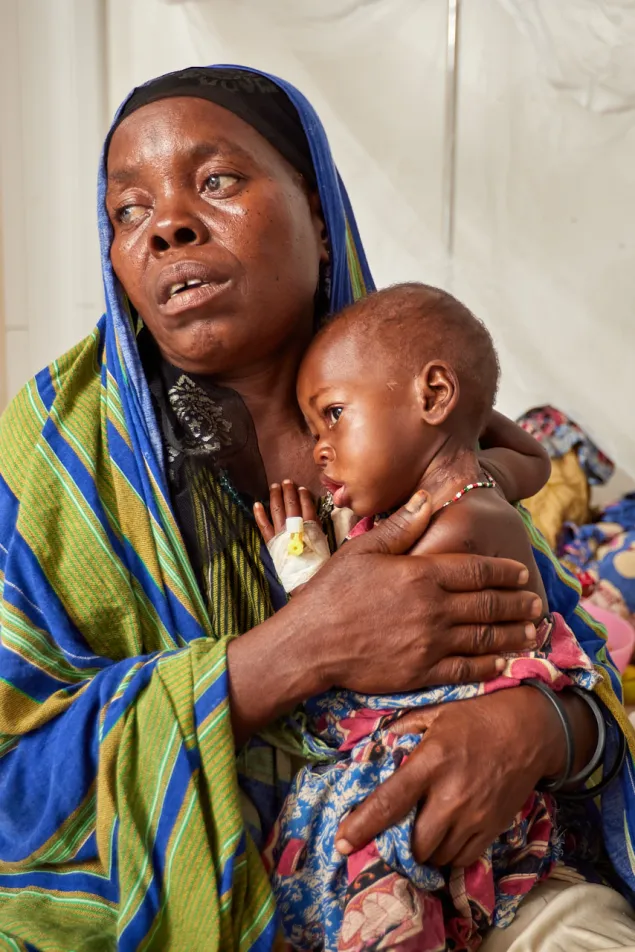
Mothers or caregivers stay with the baby for the duration of the treatment. They receive three-meals a day and are trained on nutrition and proper breast-feeding habits. Bolay Hussein’s daughter is in the second phase of the treatment program at the centre.
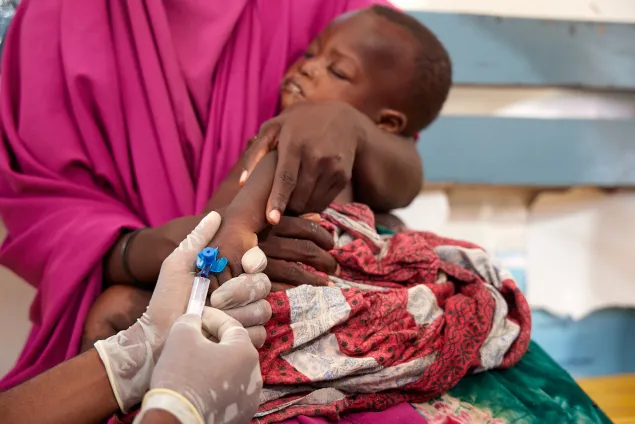
The transition phase of the stabilization center in Kismayo. The children in this phase are well out of danger and will be discharged soon.
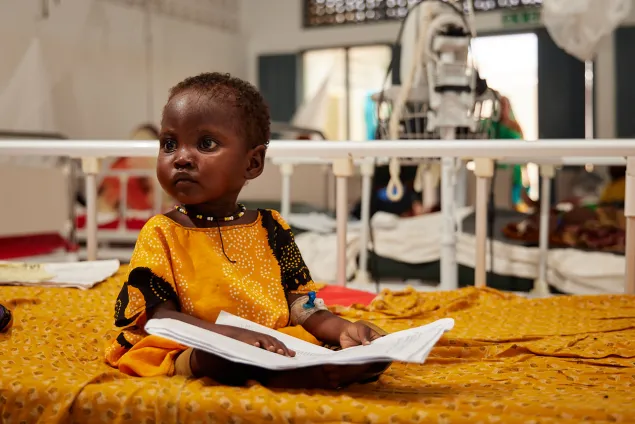
Ikraan Abdiaziz in the ICU ward of the Kismayo stabilization center. Humanitarian forecasts warn that 1.4 million children, nearly half of Somalia’s under five population, are likely to suffer from acute malnutrition if the drought conditions persist.
More and more mothers are streaming into hospitals seeking life-saving treatment for their sick children. In Kismayo General Hospital, where one of the few stabilization centers in the country is located, admissions of children under the age of five have been on the rise since October last year. A similar center located in Baidoa Regional Hospital, in Somalia's central Bay region, is witnessing a similar trend. These two centers strictly cater for critical cases.
Persistent drought conditions since October 2020 have destroyed crops and livestock with poor and scattered rainy seasons offering no respite. These images were taken in the stabilization center in Kismayo.

